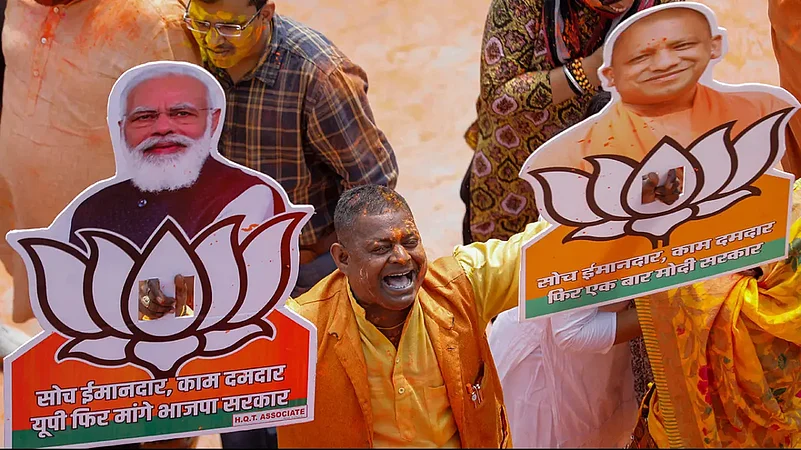The BJP's victory in the assembly polls on Thursday has put the party on a stronger wicket for the election for the post of President expected later this year.
The big victory for the BJP in Uttar Pradesh has given Prime Minister Narendra Modi a free hand to decide on the successor to President Ram Nath Kovind, who will complete his tenure on July 24, 2022, political analysts said.
Had the Uttar Pradesh election results gone in favour of the Samajwadi Party, the BJP would have had to rely on the support of fence-sitters such as Biju Janata Dal (BJD), Telangana Rashtra Samithi (TRS), YSR Congress Party (YSRCP) who together control a sizeable chunk of votes.
Advertisement
The electoral college for the presidential election comprises elected members of Lok Sabha, Rajya Sabha and elected members of state legislative assemblies and that of NCT Delhi and Union Territory of Puducherry. Members of Legislative Councils and nominated members do not form part of the electoral college.
"It is advantage NDA now," former Lok Sabha secretary general P Sreedharan told PTI.
In terms of numbers, the electoral college is made up of 233 members of Rajya Sabha, 543 members of Lok Sabha and 4,120 members of legislative assemblies - a total of 4,896 electors.
The value of the vote of every MP has been fixed at 708, while among states the value of the vote of an MLA is the highest at 208.
Advertisement
The total value of votes of the Uttar Pradesh assembly is 83,824, Punjab (13,572), Uttarakhand (4480), Goa (800) and Manipur (1080).
The string of victories in Uttar Pradesh, Uttarakhand, Goa and Manipur have turned the presidential elections a cakewalk for the BJP, a political observer said.
A section of the opposition had projected NCP supremo Sharad Pawar as a possible candidate for the presidential election. TRS supremo and Telangana Chief Minister K Chandrasekhar Rao had met a section of opposition leaders, apparently with an eye on playing a key role in the presidential election.
In a bid to create a divide in the BJP-led National Democratic Alliance (NDA), the NCP has even proposed the name of Bihar Chief Minister Nitish Kumar as a joint opposition candidate in the presidential election, should he part ways with the BJP.
The presidential elections follow the system of proportional representation by means of a single transferable vote. The value of each vote is pre-determined in proportion to the population of the respective state based on the 1971 census.
The total value of the electoral college, comprising 4,896 electors is 10,98,903 and the winning candidate has to get at least 50 per cent plus one vote to be declared as elected.




















